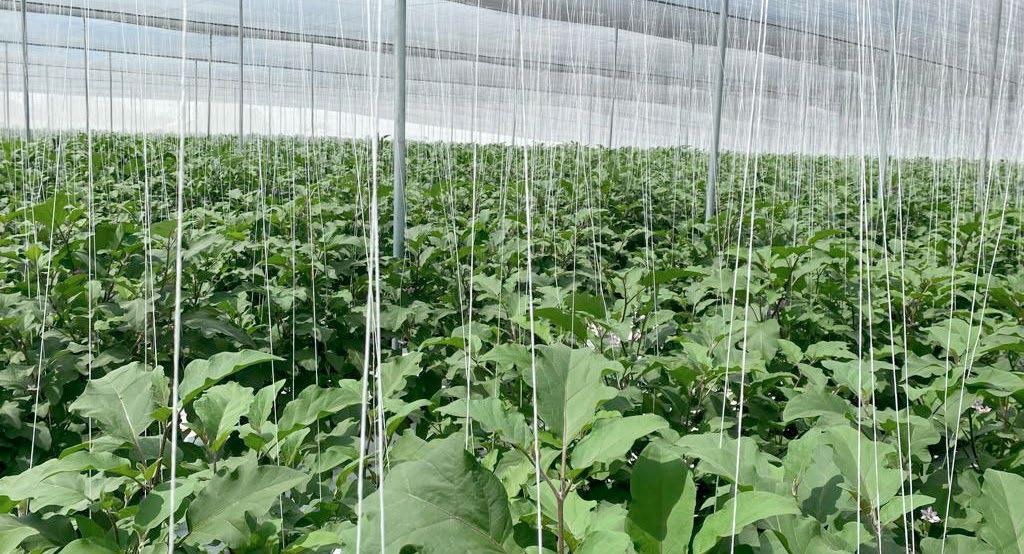
3 minute read
Combat powdery mildew in humid or wet conditions
Powdery mildew is a common fungal disease which is easily recognized as a white powdery growth on leaves, stems, petioles and floral parts of infected plants, quickly making plants unmarketable or fruit bearing plants less and even totally unproductive. There are several genera involved, including Erysiphe, Leveillula, Microsphaera and Sphaerotheca.
It is important to note that the fungus that causes powdery mildew on one plant species generally does not affect another. Because powdery mildews are obligate parasites, they require living plants for completion of their life cycle. Each of these fungi forms a network of hyphae over the leaf or stem surface, from which it penetrates epidermal cells to derive its nutrients via nutrient pegs known as haustoria. Growth may begin as small, discrete spots but can spread to cover the entire upper surface of the leaves. On many plants, the fungal growth becomes felt-like. This happens when ideal conditions produce abundant superficial mycelia bearing many colourless conidia (spores). In some plants, the leaves develop a reddish discolouration where the infection occurred. Severe infections will cause leaf stunting, yellowing and curling. In the greenhouse, powdery mildew fungi have a simple life cycle. Single-celled conidia form in a long chain on short, erect fungal stalks. This creates the “fluffiness” usually associated with powdery mildew. Under favourable environmental conditions, conidia chains are produced and released typically at a rate of one conidium per day or diurnal cycle. Conidia mature and are ready for release in 24 hours. A drop in relative humidity and the heating and drying effect of solar radiation promote spore release. Conidia need a RH of 95% or a near-zero vapour pressure deficit for more than 3–4 hours to germinate and penetrate the host’s leaf or stem epidermal cells. The mycelium produces haustoria or nutrient pegs, which provide a constant nutrient supply for fungal growth and conidial stalks as it grows over the leaf surface. Within 48 hours of inoculation, mature conidia can be released to infect other leaves or plants. Relative humidity, temperature, light, leaf wetness and air movement (e.g., drafts) all influence the severity and spread of powdery mildew infections. Because of these interrelated environmental factors, use an integrated approach. Excessive and turbulent air movements, such as drafts near open doors, improper spacing of HAF (horizontal airflow) fans, forced air furnaces or improper fan sizing or speed, promote infection and spread. Leaf wetness episodes (irrigating above the plants) promote fungal development. The occurrence and persistence of leaf wetness are affected by leaf-to-air temperature gradients, the degree of leaf radiant energy loss, solar radiation and leaf transpiration. Cultural strategies to manage powdery mildew must be employed such as to avoid drafts by keeping walkway doors closed. Automate the opening and closing of doors if possible. Reduce speed of horizontal airflow fans (HAF) if they have variable-speed motors. Maintain smooth airflow patterns over leaf surfaces. This prevents localized areas of high relative humidity (RH) and reduces air and leaf temperature fluctuations.
Advertisement
By using computer technology, establish reasonable environmental parameters to maintain the desired RH levels through heating and ventilation to provide buoyancy to the air that will allow for efficient purging of excess moisture in the air. Avoid sudden changes in either temperature or RH due to venting. High RH on its own does not necessarily promote powdery mildew. Rely on the radiant heat from both the crop zone and above crop heating lines to maintain a drier, warmer crop environment. It is advisable to establish a higher minimum pipe temperature if using hot water, or apply short pulses of steam into the above-crop heating lines to create a source of radiant heat to maintain a warmer leaf temperature than the surrounding air. Maintaining minimum crop heating is important because during the evening in late summer, the dew point is often reached in the greenhouse as temperatures drop. Closing shading or energy curtains and/or using highpressure sodium lighting during the winter months will help prevent radiant energy loss from leaf surfaces by keeping them warmer.
Finally – the greenhouse staff must constantly inspect plants throughout the greenhouses system and alarm management of any disorders of any kind to take immediate action. Source: Omafra CA






